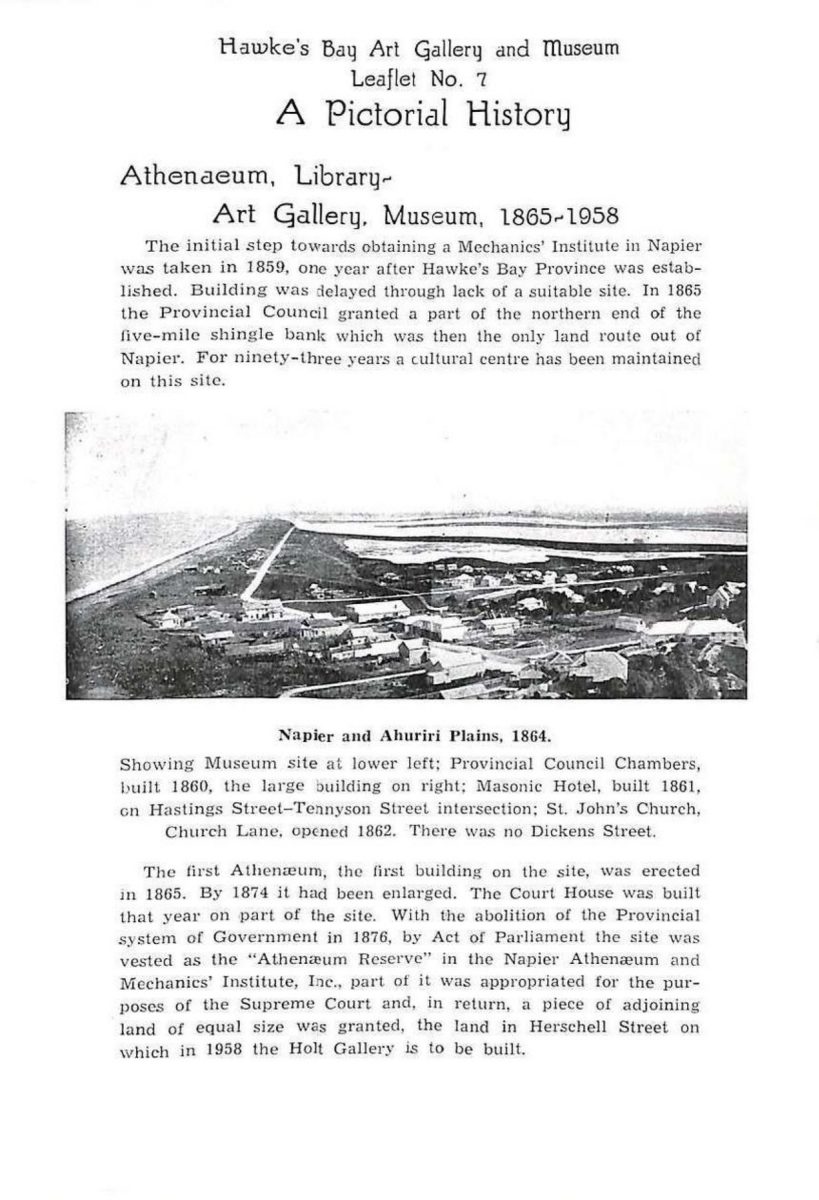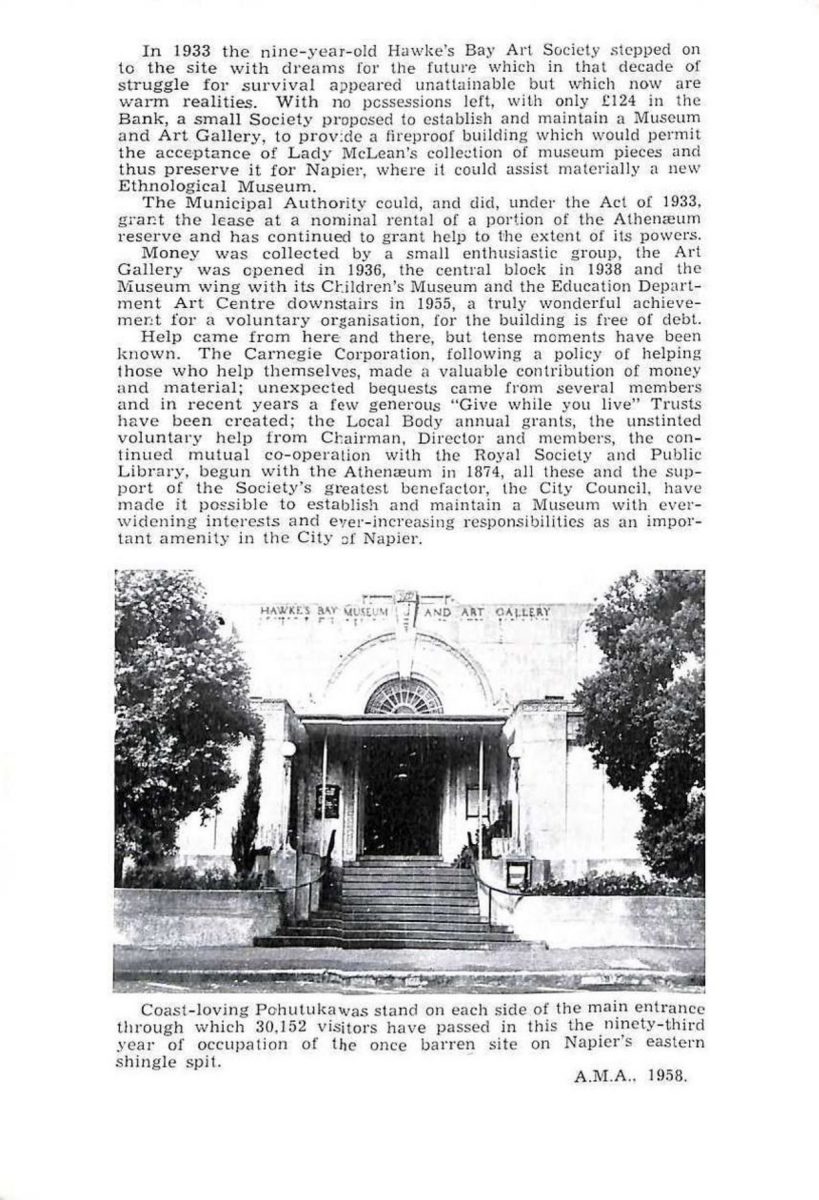In 1933 the nine-year-old Hawke’s Bay Art Society stepped on to the site with dreams for the future which in that decade of struggle for survival appeared unattainable but which now are warm realities. With no possessions left, with only £124 in the Bank, a small Society proposed ‘to establish and maintain a Museum and Art Gallery, to provide a fireproof building which would permit the acceptance of Lady McLean’s collection of museum pieces and thus preserve it for Napier, where it could assist materially a new Ethnological Museum.
The Municipal Authority could, and did, under the Act of 1933, grant the lease at a nominal rental of a portion at the Athenaeum reserve and has continued to grant help to the extent of its powers.
Money was collected by a small enthusiastic group, the Art Gallery was opened in 1936, the central block in 1938 and the Museum wing with its Children’s Museum and the Education Department Art Centre downstairs in 1955, a truly wonderful achievement for a voluntary organisation, for the building is free of debt.
Help came from here and there, but tense moments have been known. The Carnegie Corporation, following a policy of helping those who help themselves, made a valuable contribution of money and material; unexpected bequests came from several members and in recent years a few generous “Give while you live” Trusts have been created; the Local Body annual grants, the unstinted Voluntary help from the Chairman, Director and members, the continued mutual co-operation with the Royal Society and Public Library, begun with the Athenaeum in 1874, all these and the support of the Society‘s greatest benefactor the City Council have made it possible to establish and maintain a Museum with ever-widening interests and ever increasing responsibilities as an important amenity in the Cityof Napier.
HAWKE’S BAY MUSEUM AND ART GALLERY
Coast-loving Pohutukawas stand on each side of the main entrance through which 30,152 visitors have passed in this the ninety-third year of occupation of the once barren site on Napier’s eastern shingle spit.
A.M.A. 1958.















Do you know something about this record?
Please note we cannot verify the accuracy of any information posted by the community.